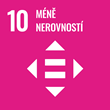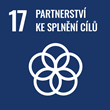Informace o projektu
Aril-fused Heptamethine Cyanine dyes, Synthesis, Photophysics, and Photochemistry
(CoeusCy7)
- Kód projektu
- 101149087
- Období řešení
- 5/2024 - 4/2026
- Investor / Programový rámec / typ projektu
-
Evropská unie
- Horizont Evropa
- Marie Skłodowska-Curie Postdoctoral Fellowships (MSCA PF)
- Fakulta / Pracoviště MU
- Přírodovědecká fakulta
An unparalleled advantage of light as a control stimulus, such as tunability, high spatial and temporal precision, and orthogonality
towards biochemical systems, is relatively well established. However, the application of light for phototherapy in living organisms is
limited by the intrinsic properties of biological tissues, allowing for significant penetration depth only in the 650 – 900 nm range. This
restriction calls for a careful design of the chromophore intended for phototherapy. Heptamethine cyanine dyes are well-suited to
meet the wavelength requirements essential for modern bioimaging techniques and chemistry. The biocompatibility, photochemical,
and photophysical parameters of these dyes can be adjusted by varying substituents at different positions along the heptamethine
chain. The CoeusCy7 project aims to synthesize cyanine dyes with aryl groups fused in the various positions of the heptamethine
chain and novel types of chain substitution. A notable feature of these novel dyes is the Z configuration of the C=C bond imposed by
the aromatic ring. The objective is to investigate these cyanine dyes in terms of their photophysical and photochemical properties,
focusing on absorption characteristics, chemical stability, and photostability. Novel cyanine dyes are expected to exhibit
bathochromic shifts in their absorption and emission spectra and to modulate other photophysical properties, such as quantum
yields of accompanied chemical processes, intersystem crossing efficiency, and affinity for or production of singlet oxygen. These
novel cyanine dyes would be a valuable addition to the current repertoire, expanding the scope of their photophysical,
(photo)chemical, and biological applications. Moreover, the CoeusCy7 project will contribute to an advanced mechanistic
understanding of the Zincke reaction used for their synthesis and will provide deeper insights into their structure and photophysical/
photochemical properties.
Cíle udržitelného rozvoje
Masarykova univerzita se hlásí k cílům udržitelného rozvoje OSN, jejichž záměrem je do roku 2030 zlepšit podmínky a kvalitu života na naší planetě.




